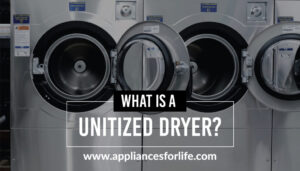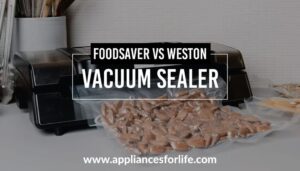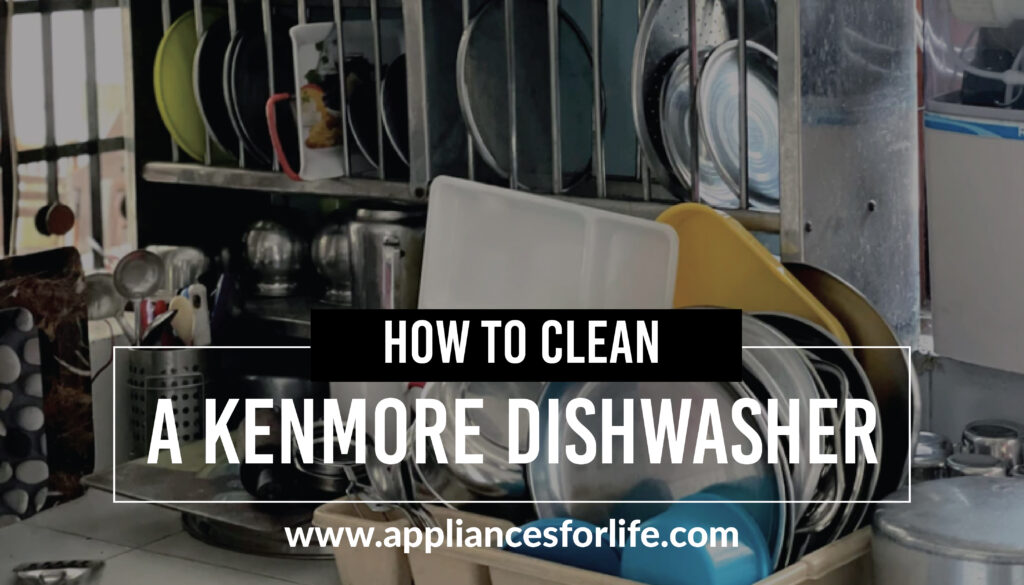- It is convenient to assume that dishwashers are a luxury that are not needed since handwashing does the job pretty fine. However, it is certain that an individual or a group who has to wash in large numbers will have a contradictory opinion. Dish-washing has not always been as convenient as it is now. A lot of hardship had been suffered for this course in the past, till the first dishwasher was invented- ‘’Necessity is the mother of Invention’’.
- As disruptive as the technology of the dishwasher may be, it is not without its own flaws. However, there is consolation in the fact that these flaws and malfunctioning can be totally avoided with the administration of proper and adequate maintenance measures. One of these measures is the regular cleaning of the machine so that it functions effectively. This article provides an insight into how this cleaning can be done effectively.
Introduction
Table of Contents
ToggleIt is natural that you hop into the shower when you are feeling dirty or actually dirty. We all fulfill this routine because we know that dirty living is a recipe for harmful infections. Just like you need to take a shower when you are dirty, your dishes need to take a shower too after every use. Dishwashing has not always been an easy task/chore. It is particularly tedious when you have to do it in a large quantity. The brute and hardship of handwashing were most experienced by commercial dishwashers. Not only did this process consume a lot of time, but it was also very tedious.
Thanks to an ingenious American called Josephine Cochran (1839–1913), who invented the first automatic dishwasher in 1886. Soon enough, handwashing became a thing of the past. However, this is not to say that every part of the world has outlived the era of handwashing today. Cochran’s machine worked with a very simple principle. You only had to load your dirty crockery into baskets and the machine showered it clean with jets of hot and soapy water.
How Dishwashers Work
At one point or the other, most of us have wondered what happens to our dishes, when the dishwasher door is shut. Whether this thought was conceived out of the curiosity of a child or the curiosity of a scientist and a fact finder. The understanding of how a dishwasher works will help our troubleshooting when the machine is not yielding clean dishes.
Personally, at a very much younger age, I thought a dishwasher was a pool for dishes. I thought the dishes arranged in a dishwasher were cleaned eventually after they must have been kept in that pool for a while but apparently, I discovered in the long run that this is not exactly the case. Dishwashers are a lot closer to car washes in their cleaning principles. This section will now provide further insight into the workings of a dishwasher.
The Dish-Washing Process
Dishwashers do not only make your dishes clean, but they also sanitize those dishes and they achieve that through hot water heating. Water temperatures in a dishwasher get as high as 130°F-140°F. However, this heating does not happen at the instant that the dishwasher is connected to power- It is a gradual process. The dishwasher pulls in water from a connected external source and when a cycle starts the water is pumped into a pool in the machine, reaching the very bottom where the heating element of a dishwasher is positioned. The heating element then heats the water as soon as the dishwasher is turned on.
However, before the dishwasher dispenses water at all or even heats it up, some dish-washing detergent must have been added to the detergent dispenser. The water subsequently added to the machine pool is then mixed with some detergent thoroughly and sent into the spray arms found throughout the dishwasher, typically at the bottom and top of the dishwasher and occasionally beneath the top rack. The water surges through the spray arms and hits the dirty dishes, hopefully taking some nasty food stains with it.
The water eventually drips back into the pool in the dishwasher. In this pool, that water is filtered to get rid of debris and crumbs. After this filtration, it is reheated and sent back out into the spray arm once again. The same water is being constantly used and reused, heated and reheated, sprayed and collected. Once the water hits the desired temperature, the heater turns off, but the pumps continue pushing water through the spray arms. At the end of that portion of the wash cycle, all of the water is drained. new, unused water takes its place, and the cycle begins anew.
The Stages of Dishwashing
1. Pre-wash/ rinse cycle
As the term suggests, it is pre-wash because this is not the stage of actual washing. You may recollect that sometimes during hand-washing, dishes are soaked for a while in order to get rid of the food particles that may be latching onto our dishes, the pre-wash cycle works on this exact principle. This situation has been envisaged by dishwasher manufacturers and they have thought, ‘why don’t we make the actual washing a lot easier and more effective by providing a soaking function with hot water and sometimes detergent( the detergent function varies according to the dishwasher model in question). This cycle is really important for when the dishes are really dirty and the pre-wash cycle takes no time at all, it is only a few minutes long.
2. Main Wash
This is the part where clean water is pulled into the dishwasher from the external connected source. As soon as the water is supplied, heating begins. The heating is necessary to provide appropriate sanitation for the dishes. Spraying follows after the heating-The inside of a dishwasher is ‘decorated’ with spray arms to reach every spot in the washer and on the dishes. This is necessary because it is this pressurized spray action that brings about clean dishes. After the spraying, filtration begins, to sieve food particles and debris out of the used water. The filtered water is thereafter heated affresh, Just like the main wash, the heater is eventually shut off while the spraying continues.
The final wash/rinse may or may not use detergent. Like the main wash, the final wash/rinse can take 20 to 60 minutes and may repeat multiple times throughout the cycle duration.
Worthy of note is the fact that some dishwashers do not have a heating system- These models are mostly old ones. Therefore, it is the water temperature that runs in the kitchen that they are predisposed to. In this case, make sure to heat the water that will be supplied to the dishwasher so as to have cleaned and sanitized dishes at the end of your wash. Washing with cold water may be the culprit behind unclean dishes or undissolved detergent pods. If this is the case, try running hot water at the kitchen sink (to purge the cold water from the system), then turn off the faucet once the dishwasher cycle starts. If the hot water at the kitchen sink stays on, it will pull hot water away from the dishwasher when it needs it most.
Some manufacturers even encourage additional hot water rinsing and drying, just to achieve complete sanitation.
Why Should I Clean My Dishwasher
It may be counterintuitive to imagine that a device that makes things clean will need cleaning, itself. It is pretty convenient to just assume that water and detergent constantly run through my Dishwasher, hence it should be automatically left clean. However, this is usually not the case as we sometimes discover food crumbs, detergent lumps, and suds lurking in some intricate parts of the dishwasher. Things like those should never be taken lightly because food crumbs and suds can form a perfect breeding ground for bacteria and fungi. Hence, dishwasher cleaning is a necessary procedure to stay healthy
It is not far-fetched that the health implications of consuming bacteria and fungi can be really catastrophic. Harmful bacteria like E’Coli can grow from this and cause deadly diseases to the lungs and other vital organs of the body. Diana Rodriguez-Zaba, president of the IICRC-certified cleaning restoration company called Service Master Restoration by Zaba in Chicago had this to say concerning the risk of bacteria in a dishwasher, “When dishes are not properly cleaned, there might be residual germs and bacteria on them, which can make you sick,”. He continued by stating that it is worse, if you’ve ever had a clogged drain, bugs can sneak into the dishwasher through the dishwasher drain and stay in the filter, too. Clogged drains also make the dishwasher-less effective, so you might still see leftover food particles on your plates after you’ve given them a rinse down (even in a heavy load)’’. In the section below we shall look at ways to effectively clean your dishwasher in order to avoid the exposure to bacteria from our dishwashers.
How to Clean Kenmore Dishwasher step-By-Step
Generally, dishwashers are self-cleaning due to the nature of operation but this cleaning is never thorough enough to keep you away from bacteria as some dirt may still be discovered lurking somewhere in the machine. Hence there are a couple of situations where manual cleaning is needed.
Apart from the reason stated above, many of the newer model dishwashers have done away with the built-in food waste disposal. This is because manufacturers have discovered that it is much cheaper to just put in a mesh filter at the bottom of the tub. As a result of this, all wash and rinse water flow through this mesh filter. That means that every drop of your dishwasher’s wash and rinse water will flow through garbage unless you hand wash this filter on a regular basis. Now you see why it is critical to regularly inspect and thoroughly wash your dishwasher.-As long as you use it, dirt and crumbs are inevitable.
This is another reason you need to clean your dishwasher as often as possible,- If you have hard water, as hard as an approximate 10 grains per gallon of calcium carbonate, you may get an accumulation of hard water on the dishwasher’s tub, on the racks and filter too. Below is a step-by-step cleaning procedure of a Kenmore dishwasher.
Step 1: Clean the exterior of the dishwasher
It is very likely that this is the most straightforward encounter you’ll have in the cleaning of your Kenmore dishwasher. It is pretty easy, all you need to do to achieve this is get a damp cloth or sponge and a mild detergent and mop the body of your dishwasher thoroughly. This is how to make your dishwasher shine
Step 2: Clean the interior of a Kenmore dishwasher
It is important to clean the interior of your dishwasher because hard water minerals can cause a white film to build up on the inside of the dishwasher. A safety precaution frequently advised is to wear rubber gloves before taking on this task. Also while doing this cleaning ensure you do not use any other detergent apart from a dishwasher otherwise any other detergent will make the inside of the dishwasher really foamy and sudsy and foamy thereby harboring more dirt and sud.
Step 3: Clean Kenmore Dishwasher Filter
In the washing process explained in the previous section, it is clear that wash water will not be completely rid of food particles and other debris if the dishwasher filter is not present. Hence the function of the filter is to basically filter out dirt, and this implies that the filter will be dirty after almost every wash. Therefore regular cleaning of the filter is necessary to prevent unnecessary dishwasher odour or unclean dishes after washing.
To Clean Kenmore dishwasher filter:
- Remove the filter by turning up the upper filter assembly counterclockwise and lifting it out. Also grasp the lower filter, turning it in a circular motion and slightly lifting it off its position.
- Clean the filters with soft bristles under a running tap until all the particles between its ‘pores’ are completely out
- Reinsert the lower filter first after washing- do this by placing it under the locating tabs at the bottom of the dishwasher and thereafter line the upper filter next to it. Make sure the upper filter is directly and accurately sitting on the lower filter
- Insert the Upper Filter Assembly into the circular opening in the Lower Filter.
- Slowly rotate the filter clockwise until it drops into place- Continue to rotate until the filter is locked into place.
- If the Dishwasher still leaves the dishes dirty, after this process, then it may be time to buy a new dishwasher.
Step 4: Clean Kenmore Dishwasher Air Gap
An air gap protects your dishwasher against water backing up into it if a drain clogs. The air gap is not a part of the dishwasher. Not all plumbing codes require air gaps, so you may not have one. To clean the air gap, simply turn off the dishwasher and lift off the cover. Then, remove the plastic cap and clean it with a toothpick or a similar object.
Step 5: Clean the drain of a Kenmore dishwasher and its spinning arms
The drain is located at the base of the dishwasher, beneath the bottom rack. To clean it, pull out the bottom rack, and inspect it to fish out any food particles that may be blocking its grates. Remove every obstruction you see using tweezers and while you are at it, be careful not to scratch the surface of the dishwasher.
After sorting the drain, go for the spinning arms, and check to see if any of its holes are clogged by debris or water build-up? Clear them with a toothpick or tweezers and scrub them clean thereafter with a brush and bicarbonate soda
Step 7: Clean Dishwasher Gasket
The specific place to pay attention to, while cleaning the door gasket is the rock bottom area where the door meets the rock bottom of the dishwasher and therefore the inner parts of the door seal. To clean this part and other parts of the Door Gasket, make a little paste of bicarbonate soda, mixed with mild dishwasher detergent, and rub it across the gasket, scrubbing it with a toothbrush or a soft towel.
How to clean Kenmore dishwasher using Vinegar
Once you have gotten rid of leftover food particles from the targeted area of cleaning. The best and easiest way to clean your dishwasher is with vinegar. All you need to do is place 1 cup of white vinegar on the top rack in a dishwasher-safe glass or container and run the dishwasher through a cycle.
White Vinegar is so effective at cleaning that it will get rid of every unwanted smell in your dishwasher and everywhere else it is applied. It will also deal with any food particles that may have clogged your drain. Not only that, it will remove the leftover grease from previous cycles as well as any detergent buildup that may go unnoticed.
FAQs
Do I have to use dishwasher detergent or can I use other types of soaps in my dishwasher?
Dishwasher detergents are the best for dishwashing. This is so because regular detergents may cause excess foaming or suds that your dishwasher may not be able to handle. Apart from this, excess suds may get stuck on the gasket of the dishwasher, thereby causing dirt and mold in the long run. Excess sud may also force the dishwasher to release excess water to match its concentration. In that process, overflow and leakage may occur
How do dishwashers work?
Dishwashers clean your dishes by spraying them with hot water and dish Detergent through several waters fills and drains, followed by drying. The hot water comes from spray arms or towers. Although they may differ in size, shape, and placement, they all work similarly to spread the detergent, remove soil and food residues, and then rinse your dishes clean. A hot dry cycle heats your dishes so they dry more quickly and with less water spotting.
Are there items I should not place in my dishwasher?
Yes. Items like wood, iron, aluminum, crystal, and any china are not labeled dishwasher-safe. Hand washing is a great choice for those items, as they can be permanently discolored or damaged in the dishwasher. Follow the manufacturer’s recommendation on what is dishwasher-safe. Silver can be placed in the dishwasher but do not mix silver and steel in the same basket compartment as this can lead to tarnishing. When washing China, ensure to leave enough gaps between items.
21 MINUTES
ESTIMATED TIME DESIGNING AND UPLOADING THIS ARTICLE
10 HOURS 26 MINUTES
ESTIMATED TIME RESEARCHING AND WRITING THIS ARTICLE
You Might Also Like

What is a unitized dryer? This is where the washer and dryer are combined. It is a single machine that washes and dries your clothes. Clothes are usually put in a dryer after running their cycle in a washing machine. There are several types of

How to Use an LG Front Loader and Top Loader Washing Machine?
Washing machines are a great appliance to have around the house because they make our domestic chores easier and more convenient, most particularly doing laundry. For many years now, people have stayed loyal to the brands they believe have always given them everything they’ve ever

Top 5 Most Amazing 48-inch Ductless Range Hoods
In our 48” ductless range hood review, we’ll be exploring the best 48-inch ductless range hoods available on the market today. Top 5 48-inch Ductless Range Hood Comparison Table As impressive as cooking it, you can’t afford to do it in an unsafe environment

Best Home Vacuum Sealer to Keep Your Food Fresh
We have all at some point of time needed to stash away some perishable produce, keep it fresh for long and when that happens, the best home vacuum sealer is going to be our best friend. And for some of you, who have a propensity

How Many Appliances Can A 10000-watt Generator Run
We live under the shadow of global warming. There has been an upsurge in natural disasters that have caused power outages for several days. A 10,000-watt generator will give you enough juice to run large appliances, various tools on a job site, or many RV

FoodSaver vs Weston Vacuum Sealer
Every household that takes food preservation very seriously must have, at one point, thought of getting a vacuum sealer. With each day that goes by, vacuum sealers are earning unrivaled popularity in many countries across the globe, especially the United States where the appliance market

The Best Features of a Crosley 18 cu ft refrigerator
People always wonder why Crosley products are not as famous as others or even found on famous home appliances stores- Crosley refrigerators are not as famous as as other appliances because they just do not get mainstream advertising like other appliances. Furthermore, Crosley believe strongly

How to Clean a Maytag Washing Machine?
Maytag washers have been designed to stand the test of time. They have a sterling reputation for durability among other washing machine brands in the United States. However, just like every other machine, a Maytag washer too can experience necessary wear and tear and if

How To Use Electrolux Washer and Dryer
For many years, Electrolux has forced its way to the summit of the best appliance brands in the world. For the first time, Electrolux has broken the trend and created a shift in power from the likes of LG and Samsung. Is Electrolux a good

A Review of Electrolux Hand Mixers and Other Exquisite Hand Mixers in the Market Today
Hand mixers are great tools for the kitchen. Whether you need to knead dough or whip a batter, this tool is ultimately your guy. A hand mixer is also a perfect match for making mashed potatoes. One of the best hand mixers you will find

